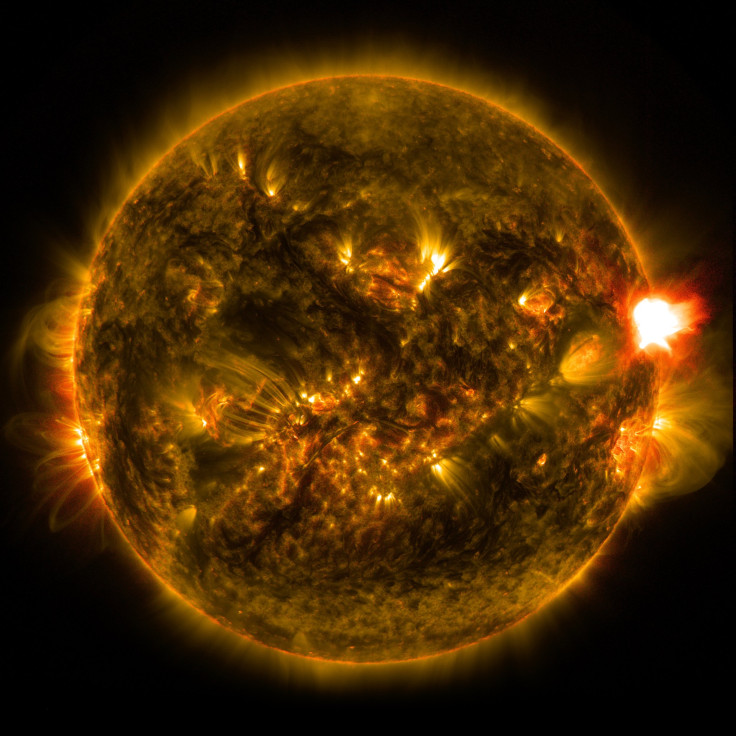First Significant Solar Flare Of 2015 Captured By NASA In Amazing Image

The sun unleashed a relatively powerful solar flare at 11:24 p.m. EST on Monday. NASA's Solar Dynamics Observatory captured the M-class solar flare, which caused a minor radio blackout on the sunlit side of the Earth during that time.
An M-class solar flare is the second-most powerful type of solar flare; X-class flares are the most intense and 10 times more powerful than an M-class flare. Monday's event was classified as an M5.6-class flare, which is five times more powerful than an M1-class solar flare. The number signifies its intensity compared with the least intense flare of its class; an M2-class flare is twice as powerful as an M1 flare, for example.
To compare the levels of intensity, the video below depicts an X-class solar flare, which erupted from the sun on Dec. 19. 2014.
Solar flares, bursts of radiation, can affect the Earth in several ways, but are not harmful to humans. A powerful flare could cause radio or GPS blackouts, and an associated coronal mass ejection (CME) could create geomagnetic storms and affect satellites. A CME is plasma that escapes the sun's atmosphere and could hit Earth two days after a solar flare. A moderate (R2) radio blackout could lead to disruption of high-frequency radio and low-frequency navigation signals for tens of minutes, while a moderate (S2) solar storm could disrupt satellite operations, and aircraft at high latitudes may be exposed to increased radiation risk.
Luckily, there was no CME associated with Monday's solar flare and the event is not expected to further disrupt communication systems on Earth. "Effects from this event included limited blackout of high-frequency (HF) radio communication on the sunlit side of the Earth lasting for tens of minutes," read the updated Space Weather forecast for Monday's solar flare. "The event was followed quickly by another radio blackout event, an R1 (Minor) event, from the same region. LASCO coronagraph imagery did not show a coronal mass ejection associated with this event, and even if there had been one, the location of the eruption would have likely sent that CME well away from Earth," the forecast read.
© Copyright IBTimes 2024. All rights reserved.






















